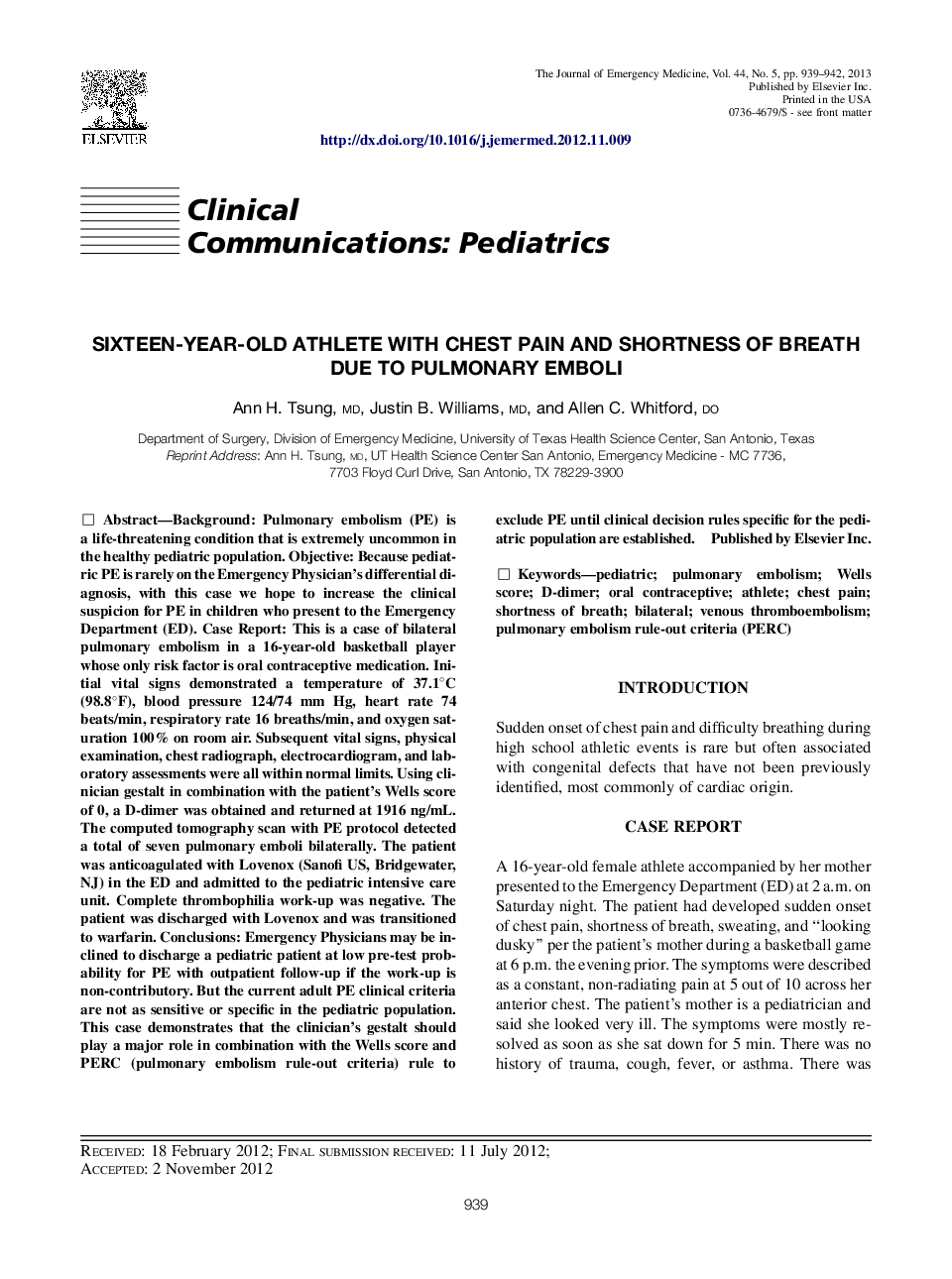| کد مقاله | کد نشریه | سال انتشار | مقاله انگلیسی | نسخه تمام متن |
|---|---|---|---|---|
| 6085618 | 1589149 | 2013 | 4 صفحه PDF | دانلود رایگان |
BackgroundPulmonary embolism (PE) is a life-threatening condition that is extremely uncommon in the healthy pediatric population.ObjectiveBecause pediatric PE is rarely on the Emergency Physician's differential diagnosis, with this case we hope to increase the clinical suspicion for PE in children who present to the Emergency Department (ED).Case ReportThis is a case of bilateral pulmonary embolism in a 16-year-old basketball player whose only risk factor is oral contraceptive medication. Initial vital signs demonstrated a temperature of 37.1°C (98.8°F), blood pressure 124/74 mm Hg, heart rate 74 beats/min, respiratory rate 16 breaths/min, and oxygen saturation 100% on room air. Subsequent vital signs, physical examination, chest radiograph, electrocardiogram, and laboratory assessments were all within normal limits. Using clinician gestalt in combination with the patient's Wells score of 0, a D-dimer was obtained and returned at 1916 ng/mL. The computed tomography scan with PE protocol detected a total of seven pulmonary emboli bilaterally. The patient was anticoagulated with Lovenox (Sanofi US, Bridgewater, NJ) in the ED and admitted to the pediatric intensive care unit. Complete thrombophilia work-up was negative. The patient was discharged with Lovenox and was transitioned to warfarin.ConclusionsEmergency Physicians may be inclined to discharge a pediatric patient at low pre-test probability for PE with outpatient follow-up if the work-up is non-contributory. But the current adult PE clinical criteria are not as sensitive or specific in the pediatric population. This case demonstrates that the clinician's gestalt should play a major role in combination with the Wells score and PERC (pulmonary embolism rule-out criteria) rule to exclude PE until clinical decision rules specific for the pediatric population are established.
Journal: The Journal of Emergency Medicine - Volume 44, Issue 5, May 2013, Pages 939-942
